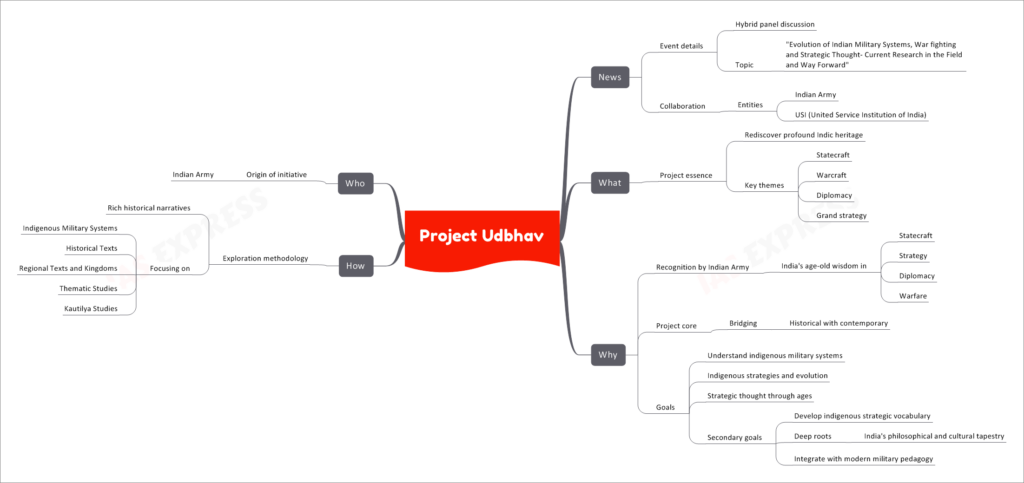[Newsbits] 29.09.2023

Global Innovation Index 2023
The 2023 Global Innovation Index (GII) has been unveiled, celebrating innovation excellence and showcasing the performance of 132 global economies. This prestigious event is celebrated by NITI Aayog, the Confederation of Indian Industry, and the World Intellectual Property Organization (WIPO).
What is the Global Innovation Index (GII)?
Definition
The Global Innovation Index (GII) is a comprehensive assessment that tracks the performance of global economies within the innovation ecosystem. It also highlights recent global innovation trends.
Highlights of GII 2023
Rankings
The top-ranking countries in the GII 2023 are as follows:
- Switzerland - 1st (13th consecutive year at the top)
- Sweden - 2nd
- United States - 3rd
- United Kingdom - 4th
- Singapore - 5th (new entrant in the top 5)
- China - 12th (the only middle-income economy within the top 30)
- Japan - 13th
India's Performance
India's performance in the GII 2023 is noteworthy:
- Rank: India secures the 40th position.
- Rise: India has made significant progress, rising from the 81st position in 2015, aligning with the vision of Atma Nirbhar Bharat (Self-reliant India).
- Leadership: India is the top innovation performer among lower-middle-income group economies and leads among the 10 economies in Central and Southern Asia.
- Consistency: India is recognized as an "innovation achiever" for 13 consecutive years.
- Strengths: India excels in Market Sophistication and Knowledge and Technology Outputs.
- Top 10: India ranks in the top 10 for Infrastructure and Institutions.
- Top-ranked Indicator: India leads in the "Domestic market scale, bn PPP$" indicator.
- Innovation Outputs: India ranks 35th globally.
- Education: India stands 11th globally for the percentage of graduates in Science and Engineering.
- Startups: India secures the 9th position in finance for startups.
- Diversification: India is 10th in Domestic Industry Diversification.
- Patents: India ranks 28th globally for the number of patents.
- Unicorns: India's unicorn valuation is 5.04% of GDP, placing it 9th globally.
- And many more positive indicators that highlight India's innovation potential.
Noteworthy Achievements
- India is among the 21 economies that have consistently outperformed for 13 consecutive years.
- India, along with other nations, has experienced the fastest climb in the GII ranking over the past decade.
How is the GII Compiled?
Compilation
The Global Innovation Index is compiled based on:
- 80 indicators.
- Data sourced from international public and private sources.
- A comprehensive and inclusive definition of innovation.
Who Releases the GII?
Released by
The Global Innovation Index is released by the World Intellectual Property Organization (WIPO).
UN Convention against Transnational Organised Crimes
An upcoming conference in Palermo, Italy, is set to commemorate the 20th anniversary of the UN Convention against Transnational Organized Crimes (UNTOC). This significant event marks two decades of international collaboration in the fight against organized crime.
What is UNTOC?
Nature of UNTOC
- UNTOC is a multilateral treaty aimed at combatting transnational organized crime, fostering international cooperation, and strengthening legal frameworks.
Protocols under UNTOC (3)
- Protocol against the Illicit Manufacturing of and Trafficking in Firearms
- Details: Addresses the illicit manufacturing and trafficking of firearms, including their parts, components, and ammunition.
- Year of Adoption: 2001
- Protocol to Prevent, Suppress and Punish Trafficking in Persons
- Focus: Particularly focuses on preventing, suppressing, and punishing trafficking in persons, especially women and children.
- Significance: This protocol represents the world's first legally enforceable agreement on human trafficking and includes an agreed-upon definition of the term.
- Year of Adoption: 2003
- Protocol against the Smuggling of Migrants
- Scope: Addresses the smuggling of migrants by land, sea, and air, providing a comprehensive framework to combat this illicit activity.
- Year of Adoption: 2004
Who is the Custodian of UNTOC?
- The UN Office on Drugs and Crime (UNODC) serves as the custodian of the UN Convention against Transnational Organized Crimes (UNTOC), overseeing its implementation and progress.
When Did UNTOC Come into Existence?
Key Dates
- Adoption: UNTOC was adopted through Resolution 55/25 on November 15th, 2000.
- Enforcement: The convention came into force on September 29th, 2003.
- India's Ratification: India ratified the convention in the year 2011, signaling its commitment to combatting transnational organized crime.
Project Udbhav
Project Udbhav, a collaborative effort between the Indian Army and the United Service Institution of India (USI), is set to shine a spotlight on India's rich military heritage through a hybrid panel discussion and extensive research.
Event Details
Hybrid Panel Discussion
- Project Udbhav kicks off with a hybrid panel discussion that brings together experts to delve into the topic of "Evolution of Indian Military Systems, Warfighting, and Strategic Thought - Current Research in the Field and Way Forward."
Collaboration
Collaborating Entities
- Project Udbhav is a joint venture between the esteemed Indian Army and the United Service Institution of India (USI).
What is Project Udbhav?
Project Essence
- Project Udbhav's essence lies in rediscovering the profound Indic heritage related to military affairs.
Key Themes
- The project focuses on several key themes, including:
- Statecraft
- Warcraft
- Diplomacy
- Grand strategy
Why Project Udbhav?
Recognition by the Indian Army
- The project's inception is rooted in the recognition by the Indian Army of India's age-old wisdom in areas such as statecraft, strategy, diplomacy, and warfare.
Project Core
- At its core, Project Udbhav aims to bridge the historical insights of ancient India with contemporary military thinking.
Goals
- The primary goals of the project include understanding indigenous military systems, exploring indigenous strategies and their evolution, and studying the development of strategic thought through the ages.
Secondary Goals
- Additionally, Project Udbhav aims to develop an indigenous strategic vocabulary deeply rooted in India's philosophical and cultural tapestry, integrating these insights with modern military pedagogy.
How Will Project Udbhav Achieve Its Goals?
Exploration Methodology
- Project Udbhav employs a comprehensive exploration methodology, which includes:
- Rich historical narratives
- A focus on indigenous military systems
- Study of historical texts
- Examination of regional texts and kingdoms
- Thematic studies
- In-depth analysis of Kautilya's strategic contributions
Who Initiated Project Udbhav?
Origin of Initiative
- The initiative for Project Udbhav originates from the Indian Army, reflecting its commitment to preserving and revitalizing India's military heritage for both the present and the future.
Fujian Bullet Train
China has unveiled its latest marvel in transportation – a high-speed bullet train track located in Fujian province, which is set to redefine cross-sea travel.
What is the Fujian Bullet Train?
Train Type
- The Fujian Bullet Train is a state-of-the-art cross-sea high-speed rail system.
Route Details
- It seamlessly connects major cities within the Fujian province.
- The route boasts an impressive over-sea segment, covering 20 kilometers of its total 277-kilometer length.
- Traveling at a consistent speed of 350 kilometers per hour, this bullet train promises rapid and efficient transportation.
Significance of the Fujian Bullet Train
Distinction
- This project marks a historic milestone as China's first-ever cross-sea bullet train, showcasing the nation's prowess in high-speed rail technology.
Where Does the Fujian Bullet Train Operate?
Connecting Cities
- The Fujian Bullet Train links a total of 5 cities within southeastern Fujian province.
- Notable cities along the route include the provincial capital, Fuzhou, and the bustling business hub of Xiamen.
- A unique feature of this route is its portions that traverse a cross-sea bridge, spanning across the strait from Taiwan.
Fascinating Facts about China's High-Speed Rail Network
China's HSR (High-Speed Rail) Stats
- Currently, China boasts the world's largest high-speed rail network.
Expansion Efforts
- The nation is set to expand its high-speed rail system by adding an additional 2,500 kilometers of track this year.
- Upon completion, the network will stretch an impressive 44,500 kilometers.
- Future plans include reaching a monumental 50,000 kilometers by 2025.
Network Composition
- China's high-speed rail network consists exclusively of newly built tracks designed to accommodate bullet train speeds.
Historic Context
- China's journey into high-speed rail began with the inauguration of its first route, from Beijing to Tianjin, in 2008.
Expansion Focus
- The ongoing expansion of the network is primarily focused on connecting remote and western regions of the country.
- New tracks are being laid in regions such as Tibet, Xinjiang, and Sichuan, ensuring that even the most geographically challenging areas are integrated into the high-speed rail network.
e-FIR
In recent news, the Law Commission has made significant recommendations regarding the implementation of electronic First Information Reports (e-FIRs). This transformative step aims to modernize and streamline the process of reporting crimes, aligning with India's digital transformation initiatives.
Law Commission Recommendations
Phased Roll Out of e-FIRs
- The Law Commission has proposed the phased implementation of e-FIRs as part of their recent recommendations.
Recent Report Submission to the Government
- A comprehensive report addressing this recommendation has been submitted to the government.
Report Details
Headed by Ritu Raj Awasthi
- The report was led by Ritu Raj Awasthi, a retired Karnataka High Court judge.
282nd Report Topic
- The report pertains to the amendment in Section 154 of the Code of Criminal Procedure, 1973, with the goal of enabling online FIR registration.
Recommendations
- The report recommends allowing e-FIR registration for:
- All cognizable offenses, even when the accused is unknown.
- Cognizable offenses with a maximum punishment of three years, even when the accused is known.
- Suggested amendments span various legislations, including the Code of Criminal Procedure, 1973, Indian Evidence Act, 1872, Information Technology Act, 2000, Indian Penal Code, 1860, and other relevant laws.
- States are granted additional powers to expand the list of eligible offenses for e-FIR based on the effectiveness of the system.
Report Origin
- The recommendations emerged from a comprehensive consultation process that began in July 2018.
- This initiative was triggered by a query from the Ministry of Home Affairs, which sought to amend Section 154 for online FIRs.
What is an e-FIR?
- An e-FIR is the electronic version of a First Information Report.
- FIR importance: It serves as the initial report that activates the criminal justice system.
Why Implement e-FIRs?
Addressing Delays in FIR Registration
- e-FIRs aim to tackle the persistent issue of delays in FIR registration.
Benefits of e-FIRs
- They enable real-time crime reporting for citizens, ensuring a faster response from law enforcement agencies.
Significance
- The adoption of e-FIRs aligns with key government initiatives, including the Digital India mission and the National e-Governance Plan.
How will e-FIRs be Implemented?
Proposed Solution
- The proposed solution involves the creation of a centralized national portal designed to facilitate e-FIR registration.
Armageddon Reedtail
In recent news, a groundbreaking discovery has come to light - the identification of a new damselfly species, Protosticta armageddonia. This discovery not only introduces us to a previously unknown inhabitant of our world but also underscores the critical issue of global insect population decline.
New Species Discovered
What is Protosticta armageddonia?
- Protosticta armageddonia: The newfound species of damselfly.
- Characteristics:
- Body attributes: It boasts a dark brown to black body, vibrant greenish-blue eyes, and an intriguing feature of eight abdominal segments, with half adorned with pale blue markings.
- Habitat: This species thrives in primary montane streams, particularly under the shelter of dense canopy cover.
Significance of the Discovery
Purpose of Naming
- The species is aptly named to draw attention to the critical issue of global insect decline.
Decline Termed as the "Insect Apocalypse"
- The worldwide decline in insect populations is often referred to as the "Insect Apocalypse."
Reasons for the Decline
- The decline of insects is attributed to several factors, including:
- Rampant habitat loss,
- Pesticide pollution,
- Harmful emissions,
- The adverse effects of climate change.
Impact
- The potential consequences are dire, with projections suggesting that over 40% of insect species are at risk of extinction in the upcoming decades.
- Among the most severely affected insects are butterflies, bees, and dung beetles.
Extinction Rate Comparison
- Insects are facing an alarming extinction rate of 2.5% per year, which is eight times faster than that of mammals, birds, and reptiles.
Possible Outcome
- If these trends continue, insects could vanish from our ecosystems within a century.
Importance of Insects
- Insects are among the most diverse and abundant animals on Earth, playing a vital role in various ecosystems.
Where was Protosticta armageddonia Found?
- This remarkable discovery was made in the southern Western Ghats of Kerala, India.






